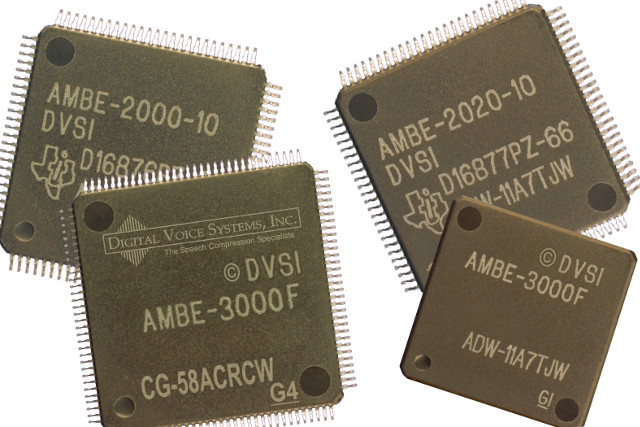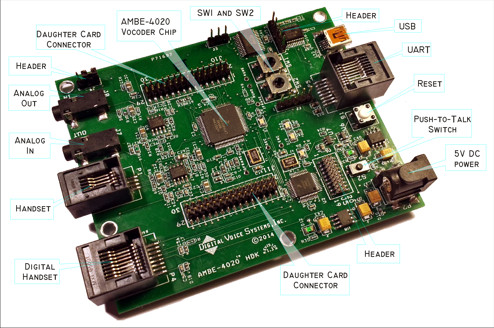Opus 1.2 open source audio codec was release a few months ago with the ability to deliver low power low high-quality audio bitrate for speech with bitrates as low as 12 Kbps. Digital Voice Systems (DVSI) claims to have gone even lower thanks to their AMBE+2 vocoder (Advanced MultiBand Excitation) providing high-quality speech at data rates from 2.0 to 9.6 kilobytes per second.
AMBE+2 vocoder is said to outperform the company’s previous generation AMBE+ Vocoder as well as the G.729 and G.726 vocoders, while operating at only 4.0 Kbps. The vocoder is suitable for mobile radio, secure voice, satellite communication, computer telephony, digital voice and storage applications

The solution can be integrated into product either using software licensing, or through Vocoder chips, and the company lists the following key benefits:
- Maintains speech intelligibility and speaker recognition at rates as low as 2.0 kbps
- Resistant to background noise and channel bit errors
- Customizable data from 2.0 to 9.6 kbps
- Uses fewer computations than CELP (Code-excited linear prediction) as used in G.729
- Does not require the use of a residual signal
- Eliminates fixed data-rate and codebook problems
- Low complexity reduces implementation costs
You can listen to male and female samples at different bitrate for your own evaluation. DVIC claims the technology is already used in digital mobile radio and satellite telephony solutions such as Inmarsat, Iridium, DMR Communication PBX, etc…

AMBE+2 voice compression algorithm is available for DSPs and CPUs from Texas Instruments, Analog Devices, ARM, MIPS, Intel, NXP, and others, and runtime environments are available for Windows, Linux, Android, iOS, VxWorks, uC/OS, and other operating systems on request. The company can also provide hardware development kits (HDK) based either on AMBE-3000 or AMBE-4020 AMBE+2 chip, USB based products from a single channel dongle to a the 12 full-duplex channel USB-3012 product, as well as Net-2000 VCUs (Voice Connect Unit) that bridge analog speech I/O to an Ethernet network for example for VoIP or voice-monitoring / recording products (for the CIA? :)).
More details can be found on DVSI’s AMBE+2 product page.

Jean-Luc started CNX Software in 2010 as a part-time endeavor, before quitting his job as a software engineering manager, and starting to write daily news, and reviews full time later in 2011.
Support CNX Software! Donate via cryptocurrencies, become a Patron on Patreon, or purchase goods on Amazon or Aliexpress




